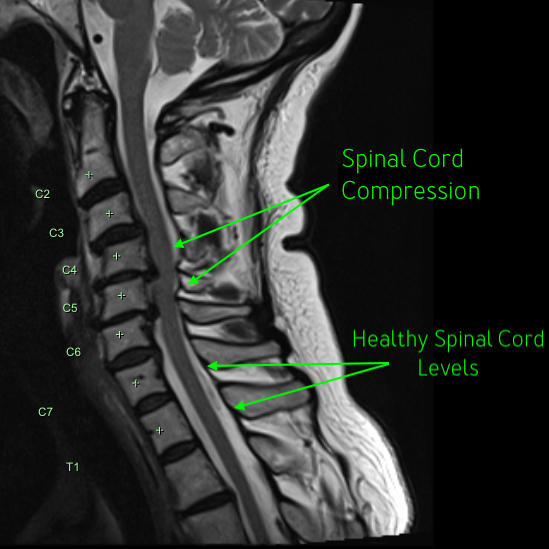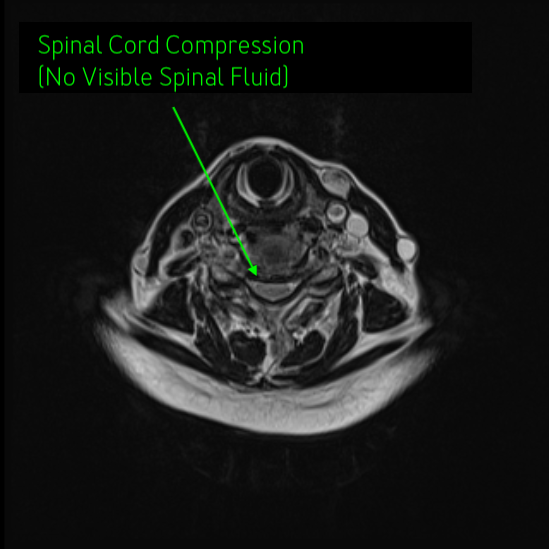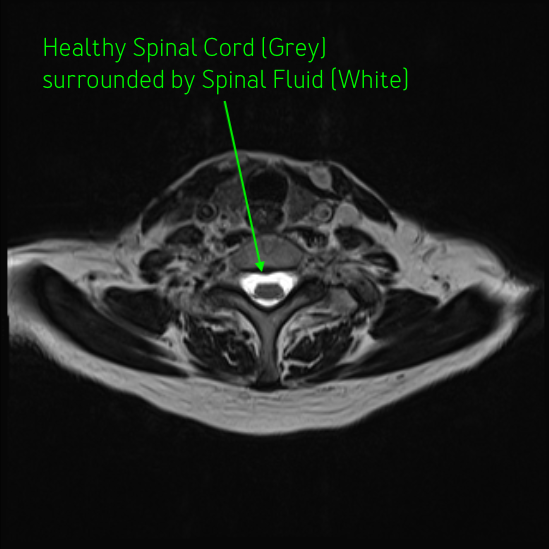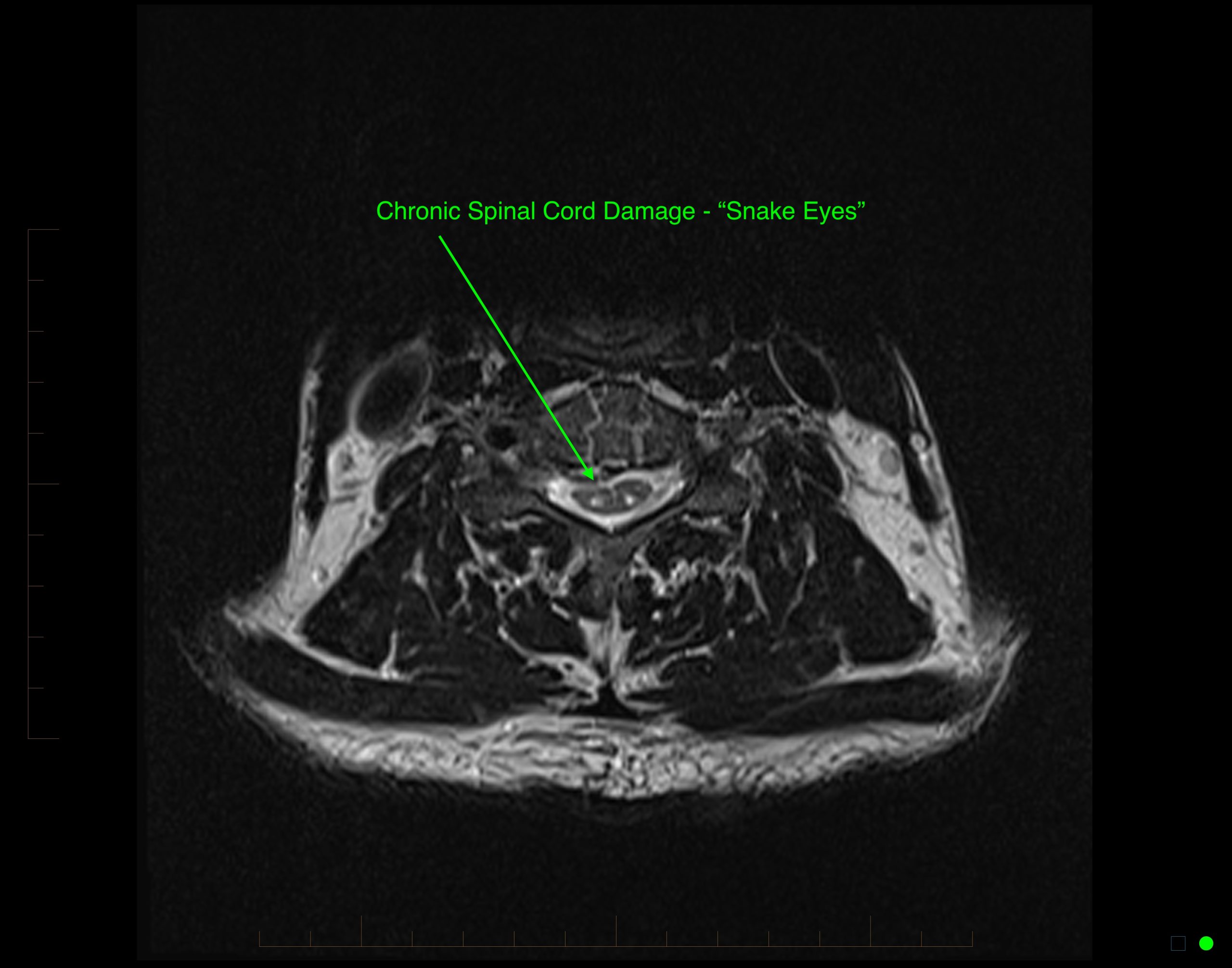What Happens in Cervical Myelopathy?
The spinal cord runs through the cervical spine and carries vital signals. When something (e.g., a herniated disc, bone spurs, or narrowing of the canal) presses on the cord, the signals become disrupted. This can lead to:
- Neck pain (which may not always be present)
- Numbness or tingling in your arms, hands, or fingers
- Weakness that makes gripping or lifting difficult
- Clumsiness and difficulty with fine motor tasks
- Walking difficulties and unsteadiness
- Loss of bowel or bladder control in severe cases
Why Does This Happen?
Cervical myelopathy is often caused by age-related changes in the spine, including:
- Degenerative Disc Disease: Discs wear down over time.
- Bone Spurs: Extra bone growth can develop in response to disc degeneration and press on the cord.
- Thickening of Ligaments: The ligaments that support your spine can thicken and compress the cord.
- Ossification of the Posterior Longitudinal Ligament (OPLL): Certain populations may develop bony growth in this ligament adjacent to the cord.
Myelomalacia
Myelomalacia is a radiological appearance where the spinal cord appears brighter (more white) due to tissue breakdown from chronic compression or trauma, representing permanent damage.
Snake Eyes
The “snake eyes” sign on MRI shows symmetrical signal changes resembling a pair of snake eyes. This indicates chronic cord compression and is associated with more severe, longstanding damage.
Why Is It Important?
Cervical myelopathy is serious because it affects the spinal cord. If left untreated, the symptoms can worsen and become permanent. Early medical attention is essential.
The Natural History of Cervical Myelopathy
- Progressive Worsening: Begins with subtle changes—mild hand coordination issues, occasional numbness, or balance problems—that gradually worsen.
- Permanent Nerve Damage: Continuous compression can lead to irreversible loss of function or even paralysis.
- Complications: Loss of bowel/bladder control and increased risk of falls due to impaired balance.
- Variable Progression: Some individuals experience a steady decline, while others may have sudden deteriorations.
- Quality of Life: Worsening symptoms lead to decreased independence and chronic pain.
How Do You Treat Cervical Myelopathy?
Early diagnosis and treatment are crucial to prevent permanent damage. Treatment options depend on symptom severity and may include:
- Physiotherapy to relieve pressure and strengthen support muscles.
- Surgical intervention to decompress the spinal cord if symptoms are severe or progressive.
These options should be discussed with A/Prof Buckland during your consultation.
Surgical Treatments & Patient Reported Outcomes
- Surgery - Cervical Disc Replacement: Replacing the damaged disc while preserving motion.
- Surgery - Anterior Cervical Discectomy & Fusion (ACDF): Removing the problematic disc and fusing the vertebrae.
Patient reported outcomes help guide treatment decisions and ensure optimal care.




